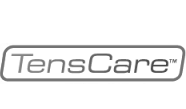You have no items in your shopping cart.
Podiatry

The innovative technology of the Handy Cure/HandyRx low-level laser can help treat your patient's foot pains which have been caused by fractures, sports injuries, ankle sprains, Achilles tendonitis, heel pain (plantar fasciitis) and more.
This unique laser technology can not only enhance the quality of patient care but also improve treatment outcomes which result in a successful clinic.The Handy Cure/HandyRx laser can be used on its own, or in conjunction with traditional podiatric treatments. The device can be bought individually for a competitive price, or in bulk for in-clinic use or resell for a volume discount on Pain Relief Online.
The Handy Cure/HandyRx Laser Therapy is a treatment for patients experiencing the following inflammatory or painful conditions:
|
|
The Benefits of Handy Cure/HandyRx Laser for Foot Pain for Patients:
-
Reduces swelling that is caused by bruising or inflammation
-
Deep penetrating laser accelerates cellular growth and tissue repair
-
Increase the formation of new capillaries in damaged tissue which speeds up the healing process, closes wounds quickly, and reduces scar tissue
-
Speeds up the process of nerve cell reconnection
-
Non-invasive method of use
-
No side effects from the laser treatment
-
Completely painless
How does it work?
Four types of lasers are used to effectively reduce pain in client's feet and ankle area:
Low-level pulse laser radiation, Infrared radiation, Visible red light and Static magnetic field.
By targeting the injured area with the Handy Cure/HandyRx’s light beam, foot specialists can trigger cellular reactions that fight inflammation, minimize pain, and enhance recovery. This allows health professionals to treat a number of common podiatric conditions with greater pain relief without any side effects that other treatment options have.
Advanced Laser Technology for Best Results
Equipped with advanced laser technology, the Handy Cure/HandyRx gives health professionals treatment options beyond invasive surgery and offers many of the same benefits to doctor and patient. Foot pain sufferers will benefit from more precise treatment with less discomfort and scarring, and they’ll enjoy shorter recovery times than those who opt for surgery.
For best results, treatments should be administered daily. Protective goggles must be worn any time the Handy Cure is being used.
2 Common Applications for Healthcare Professionals
-
Plantar Fasciitis. Affecting many competitive and recreational runners, plantar fasciitis occurs when the tissue located at the bottom of the foot becomes inflamed. An estimated 80% of chronic heel pain is linked to plantar fasciitis. 1 in 10 Americans will suffer from this condition at some point in their lives, and those aged 40-60 most likely to be affected. Every year, U.S. health care practitioners treat upwards of two million cases of plantar fasciitis.
-
Chronic heel pain. Chronic heel pain is extremely common among adults in the U.S. Biomechanically, this makes sense: the heel bone (calcaneus) is the largest bone in the foot, and the first to come into contact with the ground during walking and some running. Consequently, the heel bone absorbs a lot of stress. With a normal gait, the foot absorbs the body weight during walking largely through the arch area joint locking mechanism. Up to 80% of our walking stability is generated in this way, while the final 20% is provided by the plantar fascia and tendons, ligaments, and muscles. Gait abnormalities can be very disrupted to this stabilizing process, inflaming the structures attached to the heel bone and causing significant amounts of pain.
The Problem with Standard Treatment Options
Treatment options for plantar fasciitis and chronic heel pain typically involve stretching, massage, strengthening with an exercise plan, physical therapy, orthotic inserts, heel cups, plantar strapping, non-steroidal anti-inflammatories (NSAIDs), night splints, steroid and corticosteroid injections, and iontophoresis. Unfortunately, healthcare professionals and patients alike have found that these conservative approaches are of limited effectiveness. Many patients opt instead for surgical release or removal of the plantar fascia, submitting to an invasive operation, and long, painful recovery time for relief.
Why Health Care Professionals Across the U.S. Prefer Low-Level Laser Therapy
Podiatry laser treatment is a better option. Low-level laser therapy (LLLT) relieves pain associated with plantar fasciitis, and is fast, non-invasive, and side-effect free. When administered to treat injuries and lesions, LLLT has been empirically proven to stimulate healing and minimize pain by reducing inflammation and increasing the speed and quality of tissue repair. Laser therapy has been recognized as an optimal treatment for pain relief and other chronic symptoms related to foot injury because it targets the complete system of muscles, tendons, ligaments, connective tissues, bone, nerve, and dermal tissues, rather than working in isolation.
Give Your Patients Relief With Low-Level Laser Therapy
You can learn more about the benefits of low-level laser therapy, or order the Handy Cure/HandyRx Laser Treatment system today by visiting http://www.pain-relief-online.com/handy-cure.html/, or call us directly at (660) 264-0737!






 Default Store View
Default Store View  New Theme
New Theme